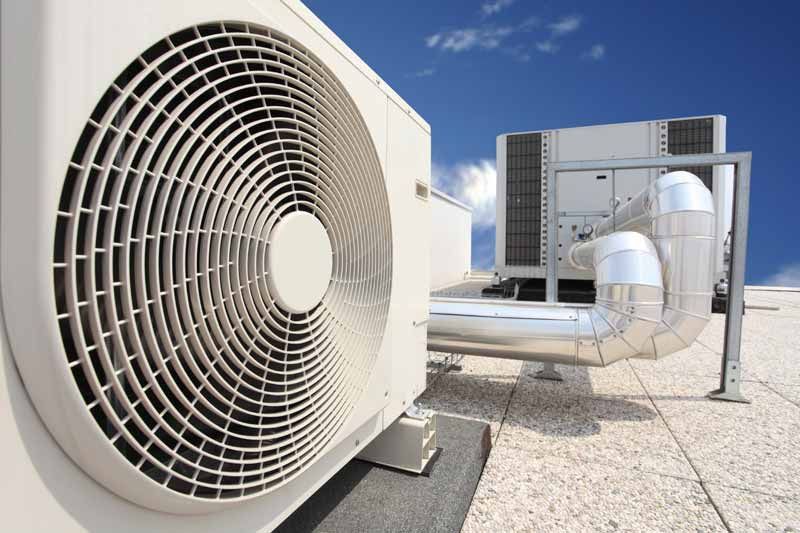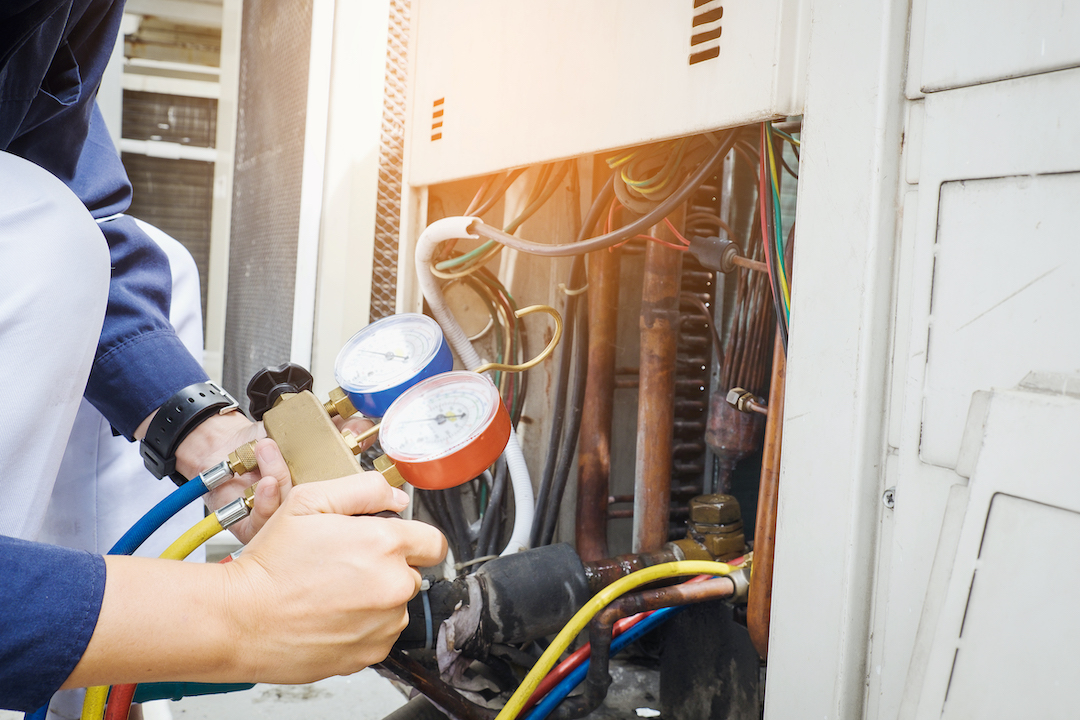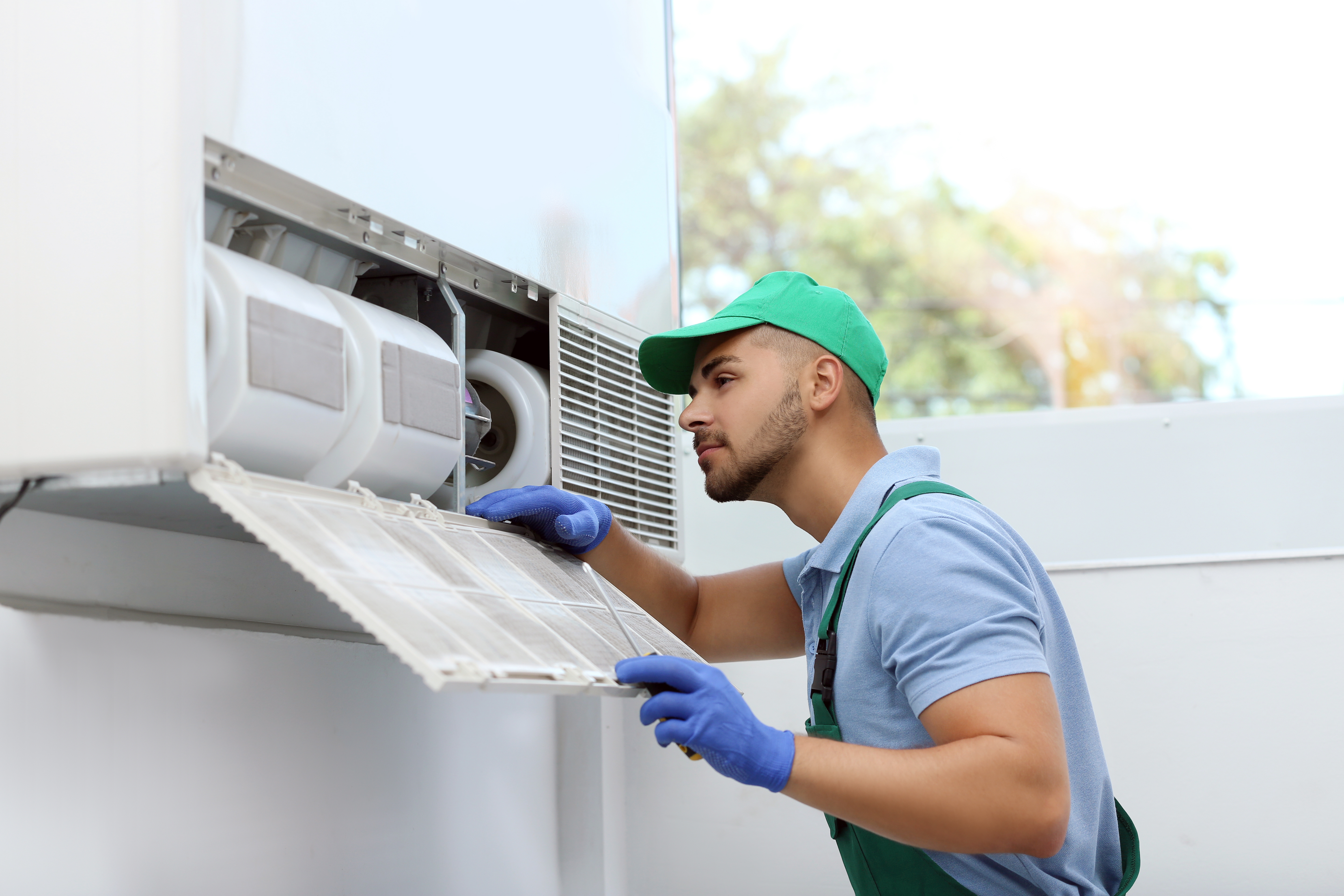A Complete Guide to Installing ductless mini splits in Any Climate
A Complete Guide to Installing ductless mini splits in Any Climate
Blog Article
Exactly How a Heat Pump and Furnace Collaborate to Maximize Your Home's Heating Performance
Recognizing how a warmth pump and heater job together is necessary for house owners looking for effective heating services. Each system has its staminas, supplying a well balanced approach to home convenience. The heatpump stands out in modest temperatures, while the heater delivers fast warmth during extreme cold. This synergy not only decreases power costs however likewise boosts the life-span of both home appliances. What factors affect this collaboration, and how can house owners maximize their advantages?
Understanding Heat Pumps: Just How They Function
Lots of people might be unfamiliar with their inner workings, warmth pumps play a vital duty in modern-day heating systems. These devices operate by transferring heat from one place to an additional, making use of the concepts of thermodynamics. In chillier months, a warm pump removes warmth from the outdoors air, ground, or water, and transfers it inside your home to warm up the living space. Alternatively, throughout warmer months, it can reverse the process, acting as an air conditioning unit by expelling warmth from inside to the outside.Heat pumps include an evaporator, compressor, growth, and condenser shutoff. The cooling agent within the system absorbs heat as it vaporizes at low temperatures and stress. The compressor then increases the pressure and temperature level of the cooling agent, allowing it to release heat as it condenses. This reliable procedure can significantly reduce energy intake compared to standard home heating approaches, making warm pumps a lasting option for environment control in homes.
The Function of Heating Systems in Home Home Heating
Heating systems play an important role in home heating by giving a trustworthy resource of heat during the cooler months. They operate by producing warmth with burning or electrical resistance, distributing it throughout the home through air ducts or radiant systems. The efficiency of a heating system is usually measured by its Yearly Gas Application Efficiency (AFUE) score, which indicates just how successfully the unit transforms fuel right into heat.Furnaces can make use of various energy resources, including natural gas, electrical power, propane, or oil, enabling homeowners to select one of the most ideal option for their requirements. Unlike heatpump, which might battle in severe cool, heating systems preserve regular efficiency, making certain that indoor temperatures remain comfortable despite exterior conditions. Furthermore, modern furnaces usually come equipped with sophisticated modern technology, such as variable-speed blowers and wise thermostats, boosting their performance and responsiveness. This adaptability makes furnaces an important part in all-inclusive home heating strategies.

Advantages of Using Both Equipments With Each Other
Combining the strengths of both heaters and warmth pumps can cause a more effective and effective home heating remedy. Making use of both systems permits home owners to capitalize on the warm pump's energy efficiency during milder temperatures while counting on the furnace for more severe cold conditions. This dual method can considerably reduce energy expenses, as heatpump eat less electrical power than conventional home heating methods when temperature levels are moderate.Additionally, using both systems with each other can boost convenience levels in the home. Warmth pumps can offer regular, even heating, while heating systems can swiftly increase ambient temperature levels when needed. Furthermore, the integration of both systems can expand the life expectancy of devices by reducing wear and tear on each device, as they share the workload. Eventually, home owners can delight in a well balanced, economical home heating option that changes perfectly to varying climate condition, ensuring a cozy and welcoming home throughout the winter season.
Exactly How Warm Pumps and Furnaces Complement Each Other
They create a corresponding heating system that takes full advantage of performance and convenience when homeowners incorporate warm pumps and heaters. Heatpump operate by moving heat from the outdoors air or ground, making them extremely effective in modest climates. They excel during milder temperature levels, providing cost-efficient home heating. Alternatively, furnaces generate warm through burning or electric resistance, delivering strong, immediate heat during extreme cool conditions.The combination of these 2 systems enables dynamic adjustments based upon temperature changes. Throughout warmer months or milder winter season days, the warm pump can take the lead, preserving power and lowering costs. As temperature levels drop, the heating system can effortlessly engage, guaranteeing regular warmth throughout the home. This synergy not just maximizes energy usage yet additionally improves the life-span of both systems, as each unit operates within its optimal performance variety. Together, they produce a balanced environment that adjusts to varying environment needs.
Enhancing Performance: Tips for Homeowners
Home owners can boost their home heating performance through a number of practical Read Full Report approaches. Developing a routine maintenance routine, integrating clever thermostat modern technology, and implementing efficient insulation and securing services are key actions. These steps not only improve comfort however likewise reduce energy costs.
Routine Maintenance Arrange
To ensure maximum home heating performance, establishing a regular upkeep schedule is important for any home. Property owners need to focus on routine evaluations of both heatpump and heaters to ascertain peak performance. This consists of altering air filters every one to three months, as clogged filters can considerably decrease efficiency. Additionally, scheduling specialist maintenance at least yearly permits professionals to determine and attend to prospective problems prior to they escalate. Home owners ought to also cleanse the heatpump's outdoor system to stop particles build-up that can hinder air movement. By sticking to a regular maintenance timetable, property owners not just boost their heater' performance yet also expand their life expectancy, resulting in higher comfort and reduced energy prices throughout the colder months.
Smart Thermostat Integration
Incorporating a wise thermostat right into a home heating unit can greatly enhance energy efficiency, particularly as it allows for precise control over temperature level settings. These devices can learn the homeowner's routine and choices, instantly readjusting the temperature to maximize convenience while lessening energy usage. They can reduce home heating during times when the home is vacant, reducing unnecessary consumption. Lots of smart thermostats additionally provide real-time power usage information, allowing house owners to make informed choices regarding their heating routines. In addition, remote access by means of smartphone apps permits individuals to adjust settings from anywhere, guaranteeing the home is cozy upon return. Overall, wise thermostat integration not just boosts convenience yet substantially adds to power financial savings and performance.
Insulation and Sealing Solutions
Smart thermostats play a critical function in energy effectiveness, however their performance can be significantly improved by appropriate insulation and securing remedies. House owners ought to focus on insulating floors, walls, and attics to lessen heat loss. Top quality insulation materials, such as spray foam or fiberglass, can substantially enhance thermal resistance. Additionally, securing spaces around home windows, ducts, and doors avoids cold air seepage and warm getaway. Weatherstripping and caulking are effective methods for attending to these leakages - furnace replacement. Regular assessments for air leakages, together with making use of blower door tests, can assist determine issue areas. By spending in insulation and securing, property owners can maximize the performance of their heating systems, eventually resulting in reduced power consumption and lower energy bills
Typical Myths About Warmth Pumps and Furnaces
What mistaken beliefs border warm pumps and heating systems? Lots of people wrongly think that heatpump are inadequate in colder environments. In fact, modern warmth pumps are created to operate efficiently even in low temperatures, giving dependable home heating throughout wintertime. Another common misconception is that furnaces are constantly much more reliable than heatpump. Nevertheless, this depends upon the certain power sources and performance ratings of the units in inquiry. Some may additionally believe that using both systems at the same time is unnecessary, yet actually, this combination can enhance home heating effectiveness, particularly during extreme weather conditions. Furthermore, people commonly think that heatpump require constant maintenance, when in truth, they have similar maintenance requires to traditional heating systems. By debunking these misconceptions, home owners can make even more informed decisions concerning their home heating alternatives, ultimately leading to improved comfort and energy efficiency in their homes.
Maintenance Considerations for Combined Systems

Regularly Asked Concerns
Can Warm Pumps Work Properly in Extremely Cold Climates?
Heatpump can struggle in exceptionally cool climates because of lowered performance and warmth extraction constraints. Nevertheless, innovations in technology have actually brought about versions developed for far better performance in such conditions, boosting their feasibility in rough atmospheres.
Just How Long Do Heat Pumps and Furnaces Typically Last?
Heatpump generally last 15 to 20 years, while heaters have a life-span of 15 to three decades. Normal maintenance can expand their long life, making sure reliable procedure and minimizing the demand for early replacements.

What Is the Typical Price of Setting Up Both Systems?
The ordinary cost of setting up both a heatpump and a heater typically ranges in between $5,000 to $10,000 - heat pump service. Variables affecting this price consist of system size, setup intricacy, and regional labor prices
Are There Tax Obligation Incentives for Making Use Of Energy-Efficient Heating Solutions?
Several homeowners make inquiries regarding tax obligation incentives for energy-efficient furnace. Numerous government and state programs commonly provide credits or refunds, encouraging the fostering of sustainable innovations to lower energy consumption and promote environmental duty.
Exactly how Do I Select the Right Dimension Heat Pump and Furnace?
Picking the right size warm pump and heating system entails determining the home's square video footage, considering insulation top quality, and examining local environment. Consulting a specialist can guarantee excellent system efficiency and power efficiency based upon particular demands. heat pump service. Recognizing just how a warm pump and furnace work together is essential for homeowners looking for efficient heating services. In colder months, a heat pump essences heat from the outside air, ground, or water, and transfers it inside to heat the living space. When property owners integrate heat pumps see this website and heating systems, they produce a corresponding heating system that takes full advantage of efficiency and convenience. Warmth pumps run by transferring warmth from the outside air or ground, making them highly efficient in moderate environments. Heat pumps can have a hard time in extremely chilly environments due to reduced effectiveness and heat extraction restrictions
Report this page